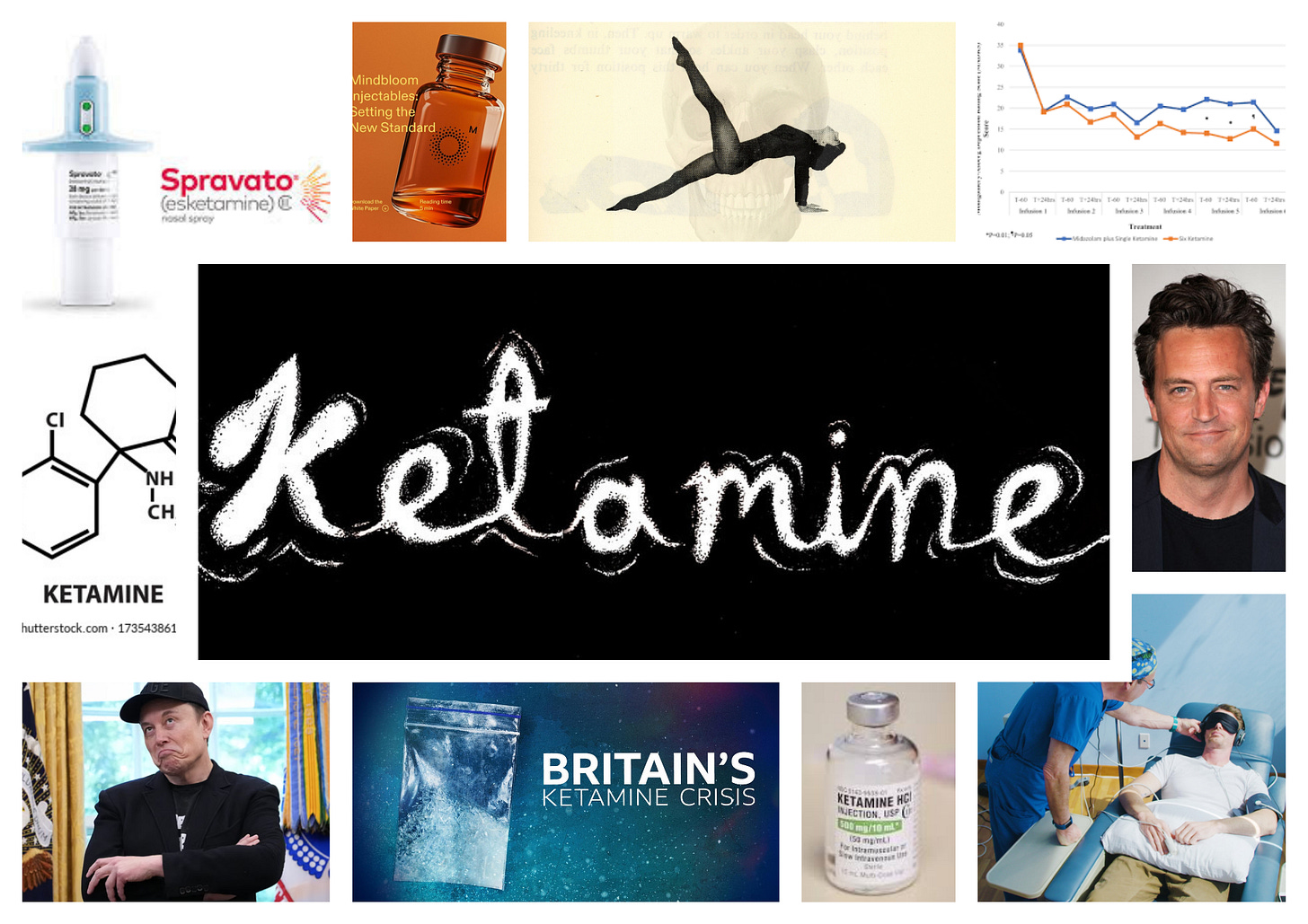Everything you ever wanted to know about ketamine
But were afraid to ask
To download this article as a PDF go here.
Ketamine is such a big, complicated story, there are at least four different parts to it - there’s Spravato, Johnson & Johnson’s blockbuster drug; there’s the wilder off-label generic ketamine market; there’s ‘home ketamine’ telehealth providers like Mindbloom; and then there’s the booming black market. There’s…
Keep reading with a 7-day free trial
Subscribe to Ecstatic Integration to keep reading this post and get 7 days of free access to the full post archives.


